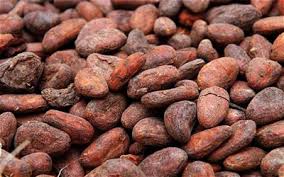Monday, 13 July 2015 16:42
 LONDON: Cocoa futures on ICE eased on Monday after a sharp drop in Malaysian grindings and sugar steadied after surging more than 4 percent in the prior session on rising global deficit forecasts.
LONDON: Cocoa futures on ICE eased on Monday after a sharp drop in Malaysian grindings and sugar steadied after surging more than 4 percent in the prior session on rising global deficit forecasts.
Arabica coffee futures rose on technically driven buying, moving further away from last week’s 1-1/2 year low, while robusta coffee held steady as traders focused on the front-month premium of July over September.
Cocoa futures dipped after cocoa processing in Malaysia fell 29.9 percent in the second quarter from a year earlier. “People are nervous about the grinds coming this week,” one London-based broker said, referring to the European second-quarter grinding data due on Tuesday and the North American grind on Thursday.
The data is likely to show a fall of between 1 percent and 5 percent in Europe and a drop of 3 percent to 10 percent in North America, dealers said.
September London cocoa was down 10 pounds, or 0.5 percent, at 2,199 pounds a tonne at 1113 GMT, having touched 2,211 pounds on Friday, the highest since March 2011.
September New York cocoa was down $ 3, or 0.1 percent, at $ 3,300 a tonne, near last month’s nine-month peak.
Raw sugar on ICE steadied after a rally on Friday as dealers focused on the expiry of the August white sugar futures contract on Thursday.
Traders said they expected a small delivery against the expiry, likely to include Brazilian sugar.
One London broker expressed surprise at the extent of the rally, given the presence of large stocks and concerns over the outlook for demand.
October raws were up 0.07 cent, or 0.6 percent, to 12.48 cents a lb.
August white sugar was up $ 0.20, or 0.1 percent, at $ 373.00 a tonne.
Speculators raised a bearish arabica coffee bet to December 2013 highs and slashed their net short position in raw sugar on ICE in the week ended July 7, the US Commodity Futures Trading Commission data said on Friday.
Arabica coffee futures firmed on technical buying, with upside limited by a stronger dollar. “Short-term indicators suggest the potential for initial consolidation within the recent range of $ 1.2400-$ 1.2800 a lb, while immediate resistance holds near the 40-day moving average at $ 1.3230,” said Myrto Sokou, senior research analyst with Sucden Financial.
September arabica futures traded up 1.85 cents, or 1.5 percent, at $ 1.2810 per lb, while September robustas were up $ 12, or 0.7 percent, at $ 1,735 a tonne.




























